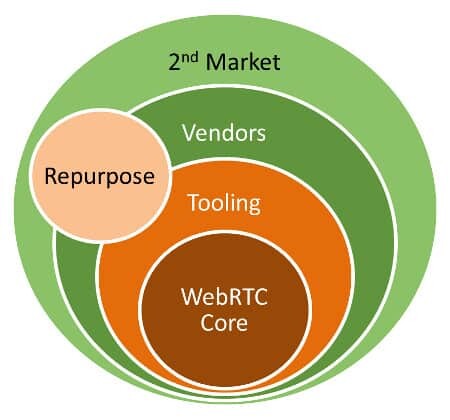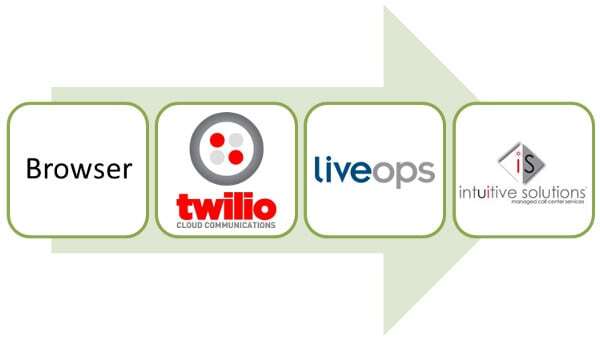That second market for WebRTC? It really does exist.
I’ve been belaboring about the 2nd market of WebRTC for quite some time now.
What is that 2nd market?

2nd market vendors are those vendors who know and care about the fact that they use WebRTC, but they are doing that and praising that by running on someone else’s end product.
I had a good example in the past, which now isn’t relevant anymore. But I found a new one. I present to you the story of Intuitive Solutions:

The quick version
Intuitive Solutions runs its operation on top of LiveOps
LiveOps built runs its operation on top of Twilio
Twilio uses WebRTC, running on top of the browser
The long version
Twilio provides a WebRTC API Platform. It actually does more than that by offering communications API in the cloud, but for our intent and purpose – it is just another API platform in my report. They are a tooling vendor that makes it easier for other developers to build their own services.
LiveOps is a customer of Twilio. They have built a virtual contact center service for those who wish to leave the brick and mortar / on premise solutions. They have added WebRTC into their service by way of Twilio – what they do is enable agents using the LiveOps service to receive and dial out calls directly from the browser, without the need to use multiple apps and services.
Intuitive Solutions offers manged contact center solutions. If you are a Pizza place in Texas, and you want someone else to take care of your excess phone orders during peak hours (and during game nights), then you can use Intuitive Solutions. To me, this is the human version of a cloud service, which offers “infinite” scalability.
I had a chat with Intuitive Solutions. They have acknowledged the fact that they are using WebRTC, and are happy to be embracing it. The most interesting part that I heard from them? Not only did it reduce their maintenance cost of their system – it also changed the way they operate because they now have better visibility into their own service.
And why is that? Because the moment you take telephony and couple it with the CRM part of it – you get something that was never there before. And if someone tells me again that this can be achieved without WebRTC – I dare you to show me an example where it really happens and we can go on exploring why this is the exception to the rule.
Why is this important?
- For those looking for reasons to adopting WebRTC, please know that others have already found them – and they are using it to transform their business
- There are many forms to developing and adopting WebRTC. Some of them are going to include long chains of vendors – something that the web is happy to accommodate

I think you are right at the end of this article. The appropriate response to, “Well, you can already do that [in reference to new WebRTC software]”, is, “Ok, show me :)”.
Then wait for them to download some apps, create some accounts, configure some settings, etc, etc. Or more likely they come to the conclusion, “Oh, maybe you *couldn’t* already do that”.
+1
Clayton Christensen refers to these relationships as “Value Networks” http://en.wikipedia.org/wiki/Value_network. Value Networks are common in almost every mature industry, and I believe is a good sign for WebRTC companies.
That said, what I believe WebRTC companies need to look out for is the trap of getting caught in existing Value Networks that could potentially derail their innovations.